
 First you want to cut a piece of ripstop to measure 1 foot by 10 feet. |
 Cut this piece in half diagonally leaving one inch on each end. |
 Notice the marks that are placed along the straight edge of the fabric. I placed a mark 1½ inches from the front edge and two more marks, one at 11 inches and the last at 7 feet. |
 If you use three different colors you can lay them out as seen in this drawing. You will have two of each color. Six of these pieces in all. |
 Lay out all the pieces in the order in which they will be sewn together and hem the long edges of each piece of the spinsock, making sure to leave marks visible to aid in the assembly process. It is important that you make sure that you fold over the hem in the same direction on all the pieces. This way all the cut edges will be on the inside of the spinsock. |
 Align the pieces along side each other by starting the second piece 1½ inches from the leading edge of the sock. |
 Join the pieces together by folding the right sides together and stich the areas shown in Fuchsia. |
 Connect each piece till all six sections are together. |
 Make sure when you sew the first piece to the last you keep right sides together so when you turn it right side out all the seams will be on the inside of the spinsock. |
 This is the shape it will take after you sew the last seam. I am using a photo of the finished product for the illustration. |
 |
 Fold the strip in half along the entire length and make a ¼" hem along the open edge. |
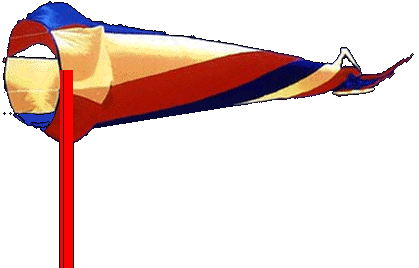 With the good side of the sock out, line up the edge strip with the front edge as shown. |
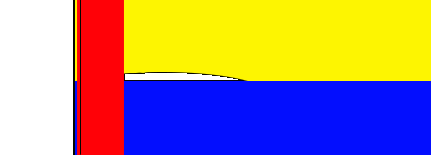 butt the edge up against the piece you just sewed. |
Then stitch it down again all the way around about an eighth inch, 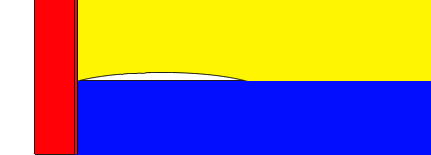 to make the seam stronger and it also help to keep it flat. |
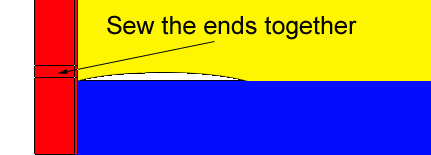 *(see note at bottom of page) After you sew around the entire sock, you can complete the leading edge by overlapping about a half inch or even tuck the end of the strip into the begining to make it look a little nicer. |
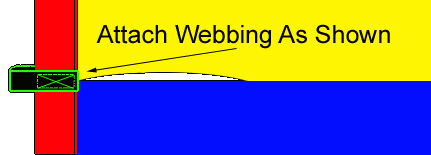 I would use ½ webbing for the bridle attachments. You will need about 3 inches for each one. Attach as shown in drawing. |
 On bigger windsocks it is a good idea to put a piece of cordura nylon as a re-inforcement at the join shown in drawing. There is a lot of force at this joint on the bigger windsocks. I didn't seem to need it on the 10 footer but my 32 foot one ripped the entire length once. So I re-inforced it and now it works great. |
 Attach a bridle to the windsock, by cutting 6 equal pieces of bridle line 10 feet long. A good rule to go by is the bridle should be as long as the windsock. |
so the bridle won't twist up. I use a big fishing swivel. * When I first started making the spinsocks I would put in 1/4" greenhouse irrigation tubing |